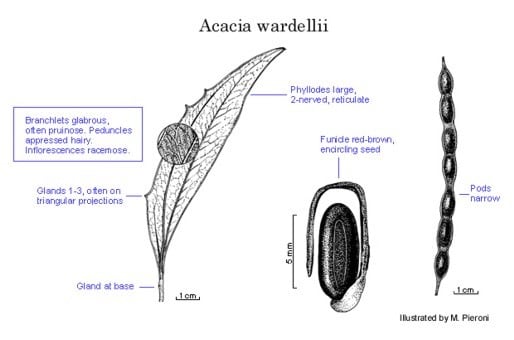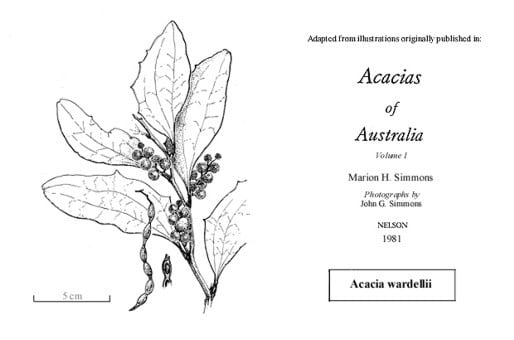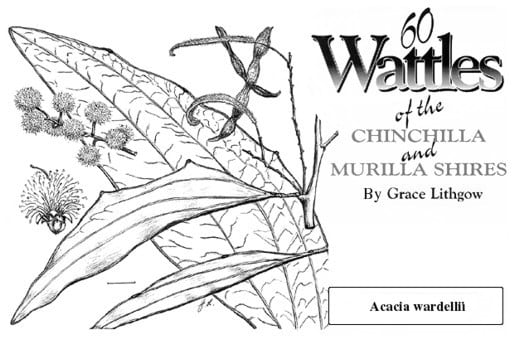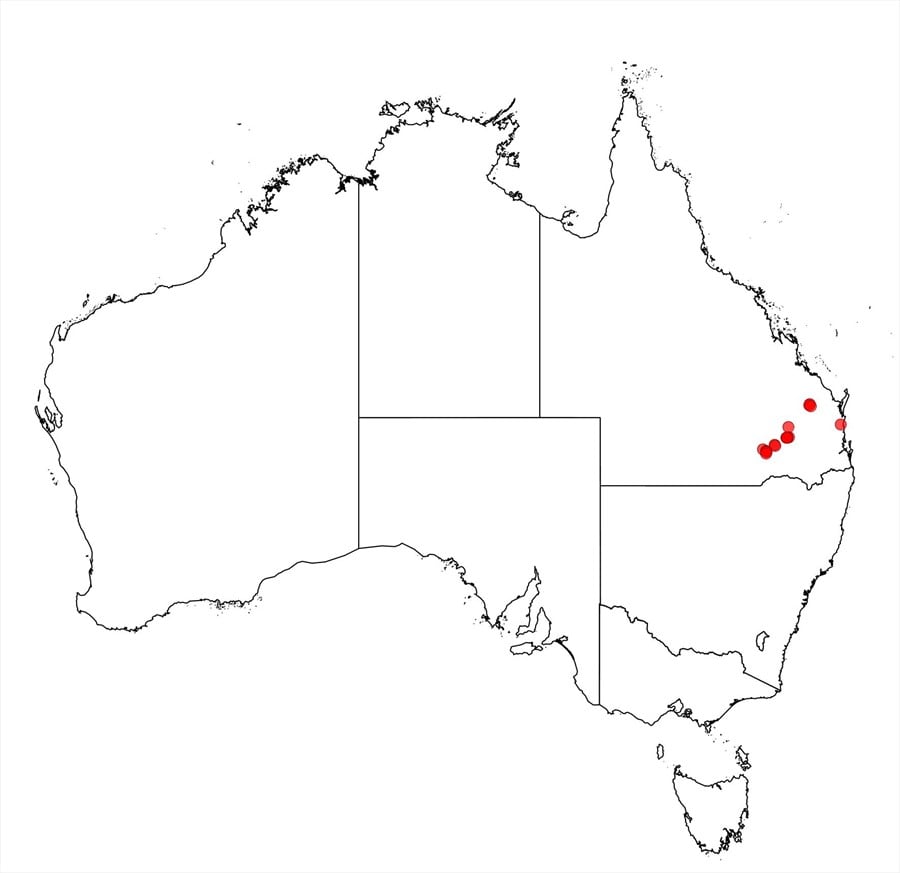Acacia wardellii Tindale
WATTLE
Acacias of Australia
Family
Fabaceae
Distribution
Known only from S of Roma, SW of Chinchilla and the Thomby Ra. near Surat, south-eastern Qld. Cultivated to some extent and may have become naturalised in places, fide L.Pedley, Austrobaileya 1: 216 (1978).
Description
Slender shrub or tree 5–7 m high. Bark smooth, silvery grey or white. Branchlets often pruinose, glabrous. Phyllodes narrowly elliptic, normally falcately recurved, usually 10–17.5 cm long and 1.5–3 cm wide, much narrowed at base, glabrous, with 2 prominent nerves ±running together and often contiguous with lower margin at base, and a lesser third nerve commonly also present, openly reticulate between nerves; gland at or near distal end of pulvinus commonly elongate, with 1–3 additional glands often on triangular projections. Inflorescences racemose; racemes 1–4.5 cm long; peduncles 3–6 mm long, appressed-puberulous, to 8 mm long and often glabrous in fruit; heads globular, 20–35-flowered, pale yellow to cream. Flowers 5-merous; sepals united. Pods to 12 cm long, 4.5–6 mm wide, thinly coriaceous, glabrous. Seeds longitudinal, oblong to elliptic, 5–6 mm long, slightly shiny, black, minutely puncticulate; funicle thickly filiform, 3/4 encircling seed, reddish brown; aril clavate.
Habitat
Grows on shallow weathered sandstone in eucalypt woodland.
Specimens
Qld: Thomby Ra., D.M.Gordon 177 (BRI, NSW, PERTH); 9.4 km W of entrance to Rockwood Stn, c. 43.2 km SW of Chinchilla, N.Hall H78/80 (NSW, PERTH); 16 km W of Inniscraig HS on road to Megine HS, V.J.Neldner & M.B.Thomas 379 (BRI).
Notes
Related to A. binervata which is distinguished most readily by its brown to grey bark, non-pruinose branchlets, solitary gland further from pulvinus and never on a triangular projection of the margin, and broader pods. These two species are not far removed from the ‘A. microbotrya group’. Resembles A. bancroftiorum (especially in habit, large, reticulate-nerved phyllodes with glands often on triangular projections, and seeds with encircling funicles) which is most readily distinguished by its 1-nerved phyllodes.
A specimen with unusually broad phyllodes, to 9 cm wide, occurs near Chinchilla (e.g. M.D.Tindale 724 & D.Boyland, BRI, NSW) and one with shorter than normal phyllodes, 7–8 cm long, occurs near Roma (e.g. V.J.Nelder & M.B.Thomas 379, BRI).
FOA Reference
Data derived from Flora of Australia Volumes 11A (2001), 11B (2001) and 12 (1998), products of ABRS, ©Commonwealth of Australia
Author
B.R.Maslin
Minor edits by B.R.Maslin & J.Rogers
This identification key and fact sheets are available as a mobile application:
URL: https://apps.lucidcentral.org/wattle/
© Copyright 2018. All rights reserved.









